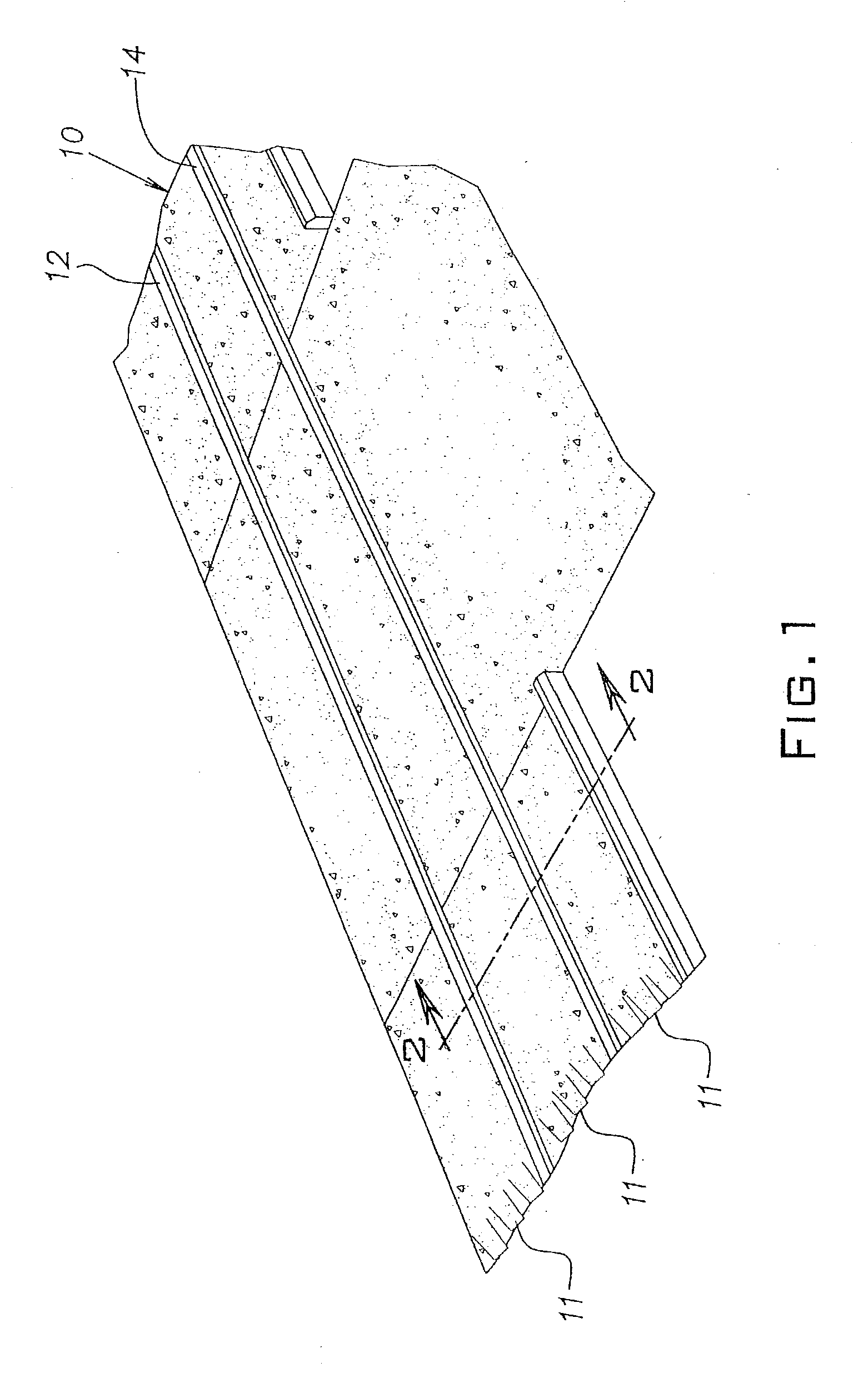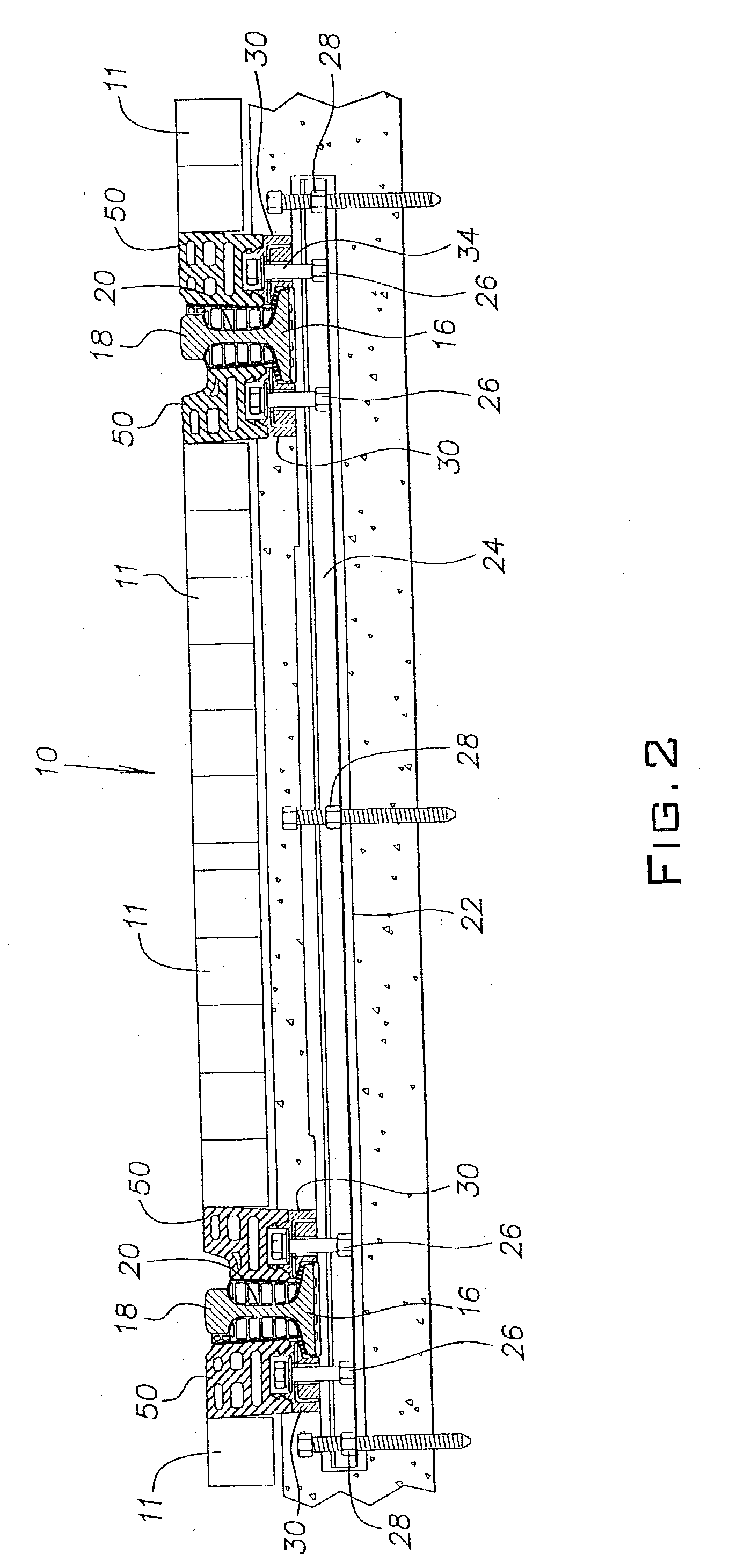Railway crossing structure
a crossing structure and railway technology, applied in the direction of tracks, superstructures, constructions, etc., can solve the problems of uneven crossing surface, less expense, and wear quite quickly
- Summary
- Abstract
- Description
- Claims
- Application Information
AI Technical Summary
Problems solved by technology
Method used
Image
Examples
Embodiment Construction
[0022] Referring now to the drawings wherein the showings are for purposes of illustrating an example embodiment of the invention only and not for limiting the same, FIGS. 1 and 2 show a railway track structure 10 that is serviceable and electrically insulates the rails from the surrounding ground surface.
[0023] More particularly, the railway structure includes a pair of spaced parallel rails 12, 14 each having a generally I-shaped cross-section, for example, a 115 RE type rail. Each rail includes a base portion 16 or rail flange, a head portion 18 and a web 20 integrally connecting the head and base portions. Paver blocks 11 define a finished grade but are incidental to the design. The finished grade could be any structural material or comprise a grass median strip in a so-called grass track application . The area currently filled in with the paver blocks 11 could be filled in with concrete or asphalt.
[0024] Typically, the base portion 16 of rail 12, 14 is operatively supported alo...
PUM
 Login to View More
Login to View More Abstract
Description
Claims
Application Information
 Login to View More
Login to View More - R&D
- Intellectual Property
- Life Sciences
- Materials
- Tech Scout
- Unparalleled Data Quality
- Higher Quality Content
- 60% Fewer Hallucinations
Browse by: Latest US Patents, China's latest patents, Technical Efficacy Thesaurus, Application Domain, Technology Topic, Popular Technical Reports.
© 2025 PatSnap. All rights reserved.Legal|Privacy policy|Modern Slavery Act Transparency Statement|Sitemap|About US| Contact US: help@patsnap.com



